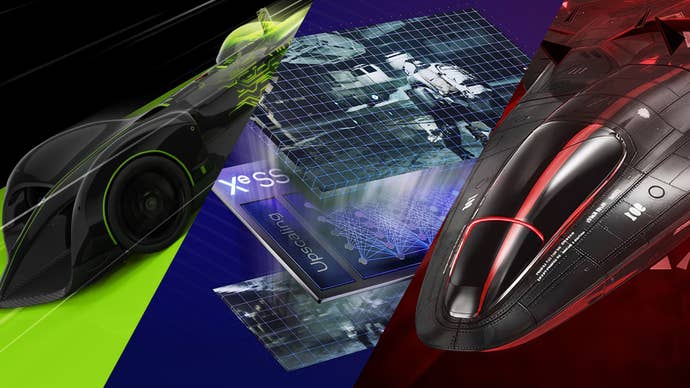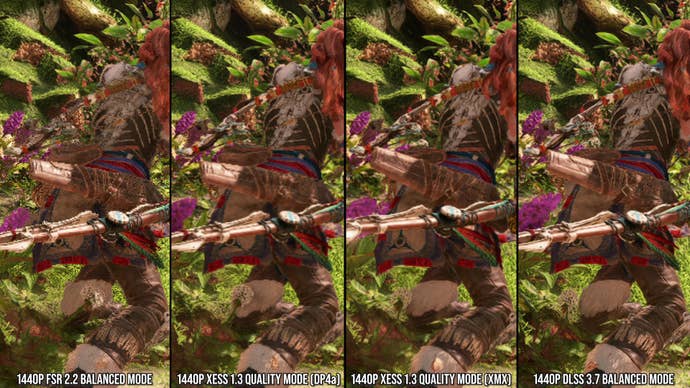Machine learning-based upscaling has evolved.
However, XeSS has changed its upscaling factors.
Any increase in frame-rate is coming from the lower native image.

While like-for-like quality has increased, there can be noticeable quality downgrades.
So, on balance, is this a good thing or a bad thing?
This is good for the user to have more options to suit their desires.

However, Intel is also changing established norms which will lead to confusion.
Users or reviewers may be confused where they falsely attribute differences in image quality and performance between the upscalers.
Even so with these caveats, while performance hasn’t really changed, image quality has.

However, it does seem less stable on large inner surface detail.
There’s less aliasing, it’s smoother, and has more detail with less smearing.
XeSS 1.3 is a net improvement then, but it’s not the finished article.
This brings us onto DLSS 3.7, which remains the undisputed king of the upscalers.
Dragons Dogma 2 still sees smearing artefacts in grass.
Still, it is nice to see.
Next up, how do the new upscalers compare with FSR 2?
AMD’s tech is ripe for improvement, lacking good anti-aliasing on moving objects.
There’s also a generic fizzle, while transparent elements like foliage have an ugly, crunchy look.
XeSS’s DP4a path is clearer and cleaner, but there can be slight bluriness and smearing.
AMD is on the record in saying that objects in motion should look much cleaner with less ghosting.